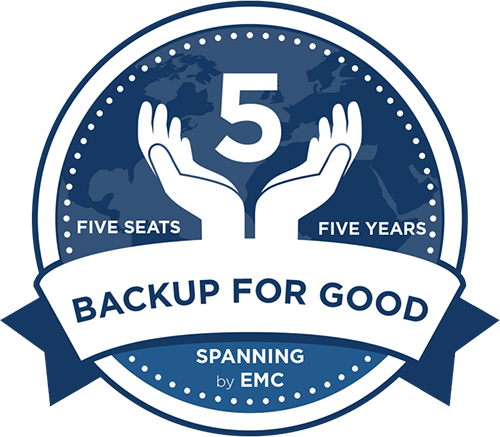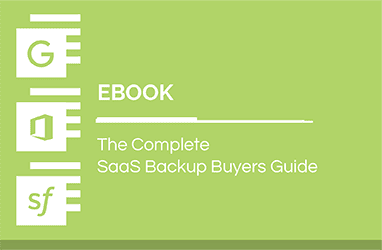7 Ways the Cloud Has Revolutionized the Way Nonprofits Work
If you’re one of the millions of people who’ve adopted cloud computing, you’ll need no introduction to just how great an innovation it can be. The list of benefits are immense, facilitating greater collaboration and massively increasing efficiency.
In a recent poll, 81% of American businesses cited cloud computing as a competitive advantage over their rivals. But the benefits extend far beyond the world of commerce. Nonprofit organizations, too, have been completely transformed by leveraging cloud technology.
In a 2012 survey of 10,000 nonprofits by TechSoup, 90% had adopted cloud technology in some way—from email, file sharing/storage to productivity applications and Salesforce.
Of course, while the cloud comes with a range of benefits, it isn’t all sunshine and rainbows. Across a broad spectrum of businesses, we often see decision makers mistakenly assume that their data is safe. In this article, we take a look at how cloud computing has revolutionized the way nonprofits work – for better or worse.
1. Remote access allows nonprofits to share data with members, regardless of where they are in the world.
It takes a variety of different people to make a nonprofit work, including stakeholders, board members, grant writers, and more. For these people, who may not always be in the same place, collaboration is key.
The cloud allows people to gain access to any information they need to, from any location, providing they have an internet connection.
This remote access via the cloud enables nonprofits to share data more effectively and securely , which invariably leads to increased productivity. In fact, when discussing the cloud, more than 42% of nonprofit organizations cited “remote access” as a distinct advantage.
2. The cloud helps nonprofits reduce their carbon footprint.
Most nonprofits have a vested interest in reducing their carbon footprint, and helping to keep our planet green. The cloud assists with this because data centers that host cloud services are much more energy efficient than the IT infrastructure that most organizations would use on-premise. This is because less servers need to be built and maintained, and therefore less energy is used.
A recent Google Workspace survey suggested that a typical organization could save an estimated 68-87% in energy, and reduce carbon emissions by a similar level, simply by migrating to the cloud.
3. Nonprofits can benefit from enterprise-class security, whilst simultaneously reducing costs.
It’s important for nonprofits to save as much money as they can, where they can.
Thanks to the cloud, nonprofits can reduce their IT costs by eliminating hardware and software that require expensive installations and/or upgrades. This means savings in power (all that electricity needed for on-site hardware), and people (those IT maintenance staffers don’t come cheap!).
The cloud has revolutionized the way nonprofits work because it allows them to reap all the benefits of enterprise-class security, backup services, and disaster recovery, at a fraction of the cost.
4. The cloud offers unmatched scalability, helping nonprofits manage growth more efficiently.
The nature of nonprofit organizations is quite unpredictable, with continuing fluctuations in volunteer numbers and donations, among other things.
The cloud offers the opportunity for nonprofits to scale up or down in order to manage current needs, rather than predict the amount of resources needed. This means that nonprofits can scale up if they need more storage space for large fundraising events, and also scale down during quieter periods in order to save money.
5. The cloud saves nonprofit organizations countless hours.
Nonprofit organizations tend to be limited in most resources, and time is no exception. In fact, time may be one of the most valuable assets that a nonprofit has, which is why the cloud is so useful.
The cloud can save nonprofits an abundance of time in a number of ways. For example, the quick deployment of the cloud saves lots of administration time, as does the automation of tedious, office-based tasks (available with some advanced cloud applications). Although tasks can be automated with on-premise apps, apps within the cloud require less IT maintenance, further saving nonprofits time, not to mention money. The adoption of the cloud means that nonprofits can spend less time on administrative tasks, and more time on their true cause.
6. The scalability of the cloud enhances fundraising opportunities.
The cloud has helped nonprofits revolutionize the way they fundraise. Web-based fundraising is continuously growing in popularity, and with the cloud’s scalable infrastructure, and various advances in cloud software, more fundraising opportunities are arising.
Spanning customer, Blake Curtis, IT Specialist for Chattanooga Zoo, had this to say:
‘Platform as a Service and Software as a Service have enabled us to do things that would otherwise be impossible with a smaller budget. We’ve only scratched the surface with what we’ve built so far, and one of the most exciting things is watching our solutions and ideas grow without having to worry about onsite infrastructure’.
The cloud has the scalability to enable nonprofits to cope with peaks in demand whenever there is a big charity drive. And, as more and more people use their mobile devices to connect with their favourite causes, web-based fundraising is becoming more of a necessity.
7. The cloud is very advantageous for nonprofits, but many traditional IT challenges still exist.
Nonprofits, like most businesses, run on data. It’s the lifeblood of an organization and, regardless of whether we’re talking about a huge multinational charity or a local concern, data loss can cause untold damage.
While the cloud facilitates greater access to this data, it isn’t without its problems. While many platforms like Google Workspace and Office 365 feature built in redundancy and backups, these aren’t available for customers to restore their data in case of accidental or malicious data loss. Unfortunately, this accounts for the majority of data loss events. So, imagine a new volunteer inadvertently deleting a folder full of your most promising donor leads, or a sync malfunction corrupting a document containing your plans for a huge fundraising event. How do you recover?
It’s absolutely vital that you cover yourself against these events by investing in a suitable backup solution.
Bringing nonprofits peace of mind while working in the cloud.
 Here at Spanning, we’re proud to have assisted so many nonprofit organizations in protecting the work of their missions. Nonprofits should never have to waste their time worrying about data recovery, or any extra administrative work, that would distract them from their mission.
Here at Spanning, we’re proud to have assisted so many nonprofit organizations in protecting the work of their missions. Nonprofits should never have to waste their time worrying about data recovery, or any extra administrative work, that would distract them from their mission.
That’s why we’ve committed to expanding our support of nonprofits through the Spanning Backup for Good Program.
The program, announced on May 4th, offers qualified non-profit organizations the opportunity to get five free seats of Spanning Backup for Google Workspace, Salesforce, or Office 365 for five years.






